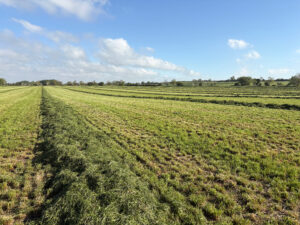There has been a huge amount of discussion about AI in the news recently. At the end of March, AI experts published an open letter calling for a pause of at least six months in AI development so humanity has a chance to discuss and implement shared safety systems to mitigate what they term “profound risks to society and humanity”.
For many, trust is already a big concern with regard to AI-generated content. The Guardian newspaper recently uncovered fake references being quoted in a ChatGPT-generated article.
There are also huge implications for creative people. AI could disrupt the creative field, which we were previously confident would be the sole preserve of humans. An AI-generated ‘photograph’ won the prestigious Sony World Photography Award – a major global competition – which highlighted our collective AI-naivety.
This is only one example of how AI is shaping the future of industries. But AI is actually already having a massive effect on many areas of our lives, including water and water efficiency.
How AI consumes water
AI uses a huge amount of water. Not directly of course, but a new study has calculated that to answer 20-50 questions, a chatbot will ‘consume’ half a litre of water in terms of generating the electricity needed to power data centres, as well as water needed to cool all the servers that host the AI. Given that billions of people already use AI and will be asking billions of questions, the amount of water that is already needed to keep it working effectively in the near future is going to be staggering.
In a world that is already water stressed and the UN’s Sustainable Development Goal of clean water and sanitation for all “seriously off-track”, the popularity of AI could have a massive impact on the global water industry.
Water efficiency and AI
The good news is that AI is already having a positive effect on water efficiency. A good example of this is a project funded by Ofwat that is being developed by some water companies to use AI to improve catchment management, making it more efficient, cost-effective and sustainable. The new technology will use sensors and cameras to collect huge amounts of data which AI will then analyse in order to identify patterns that will allow it to predict adverse weather conditions or swiftly identify if there is the potential for contamination. In which case, it will alert human controllers so appropriate action can be taken.
Keeping drinking water safe
Water engineers in California are working on AI bots that will help make it easier for water company staff to understand the law around clean water which will enable them to enforce the rules that ensure the water continues to be safe to drink.
Smart water
AI can also help with building water infrastructure that improves the way water is delivered to our taps. Using thousands of Internet of Things (IoT) sensors across water systems, AI can process huge amounts of information about water usage and water flows 24/7. Trials in Finland using AI and machine learning are looking promising, and will help improve the efficiency of water treatment processes and identifying risks earlier rather than later.
On the farm
AI can also be hugely beneficial to farmers. Digital farming technology has been using AI around the world to collect data on soil quality, using predictive analysis to automate the process of irrigation, prevent water wastage and also identify leaks. This has been proven to help reduce water consumption and companies are already using it in order to gain a competitive edge.
In the garden
A mixture of AI and inkjet technology is being developed in America that will hopefully provide a smart watering system for gardens. Flexible robotic heads will ensure that only the parts of the grounds that need watering will receive water, and the AI will analyse water flow as well as weather and soil conditions to ensure that grounds are only watered when they need it.



